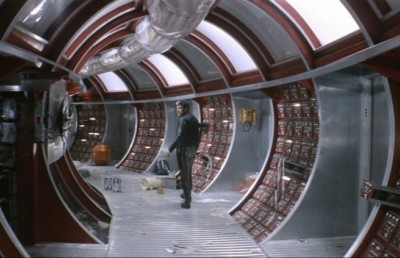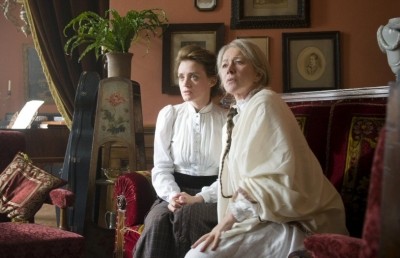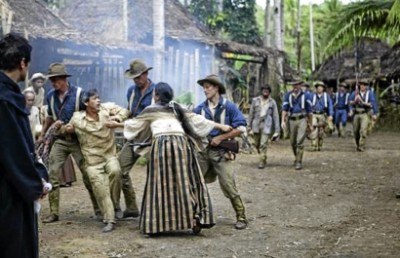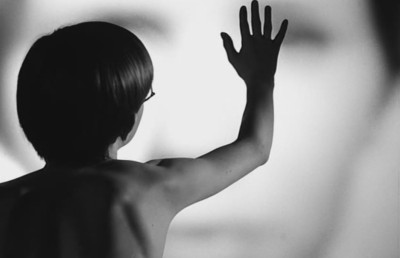Nature as “Comfort Zone” in the Films of Andrei Tarkovsky
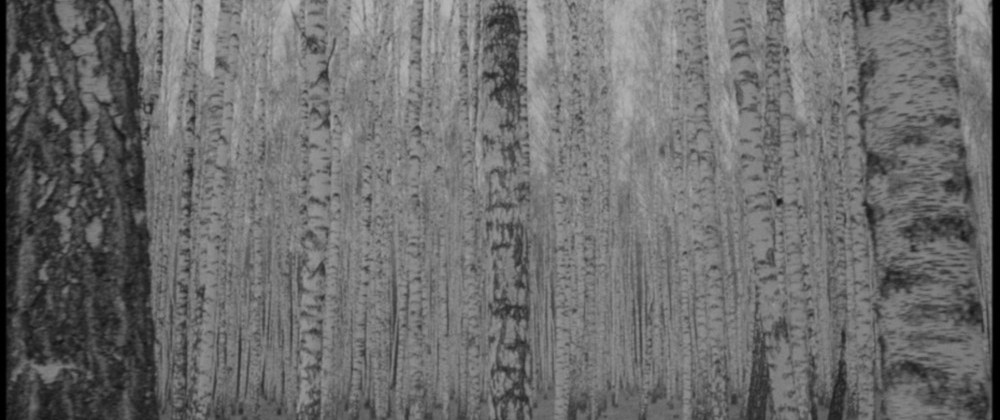
It is common knowledge among Tarkovsky scholars and fans that an important element of Andrei Tarkovsky’s film aesthetics is his unique and highly controlled use of nature. Many critics have asked him what the natural elements may mean or indeed why they are featured so greatly in his films, rain, water, wind, snow, fire, and natural spaces, such as rural areas, mountains, rivers, fords, trees, forests, and sky. Even though Tarkovsky was notoriously reluctant to admit any such symbolism in his work (or more accurately, offer to reduce the potential of an image by assigning a specific meaning), there is little doubt that nature held a profound impact on his art. I have long thought about Tarkovsky’s love of nature, and its place in his art, ever since I became acquainted with his work in the early 1980s. In an earlier essay I explained this dependence on nature as being integral to his over-all aesthetics of ‘time pressure’ or ‘time thrust’:
Hence the appearance of life-processes in Tarkovsky’s mise-en-scéne form a powerful visual tapestry that goes beyond theme or imagery to form and aesthetics. Tarkovsky relies on nature and natural phenomena to underscore and often dictate the time-pressure (rhythm) of a shot. The movement of time, its flux and quality, flows from the life-process that is recorded in the shot. Even though the fires, downpours and gusts of wind are staged, re-shot or recreated there still remains the spontaneous element of “nature’s time” within the filmic time. Each of the natural events and elements (water, wind, fire, snow) have their own sustained rhythm. Tarkovsky uses these natural rhythms to express his own, that of his characters and the temporal shape of the film (23-24).
I would like to add another function that nature has in Tarkovsky’s aesthetics: to provide a place of respite for characters who have or are experiencing a moment(s) of emotional pain. These moments occur when a character (usually one) has experienced a pain associated with either loss, grief, nostalgia, sacrifice, or violence. I will refer to this as positioning nature as a ‘comfort zone.” Although this occurs across all of his seven films, for the sake of brevity I will draw my examples from Ivan’s Childhood (1962) and Andrei Rublev (1967-1971), and a few from Solaris (1972) and Stalker (1979).
Tarkovsky’s debut film, Ivan’s Childhood, tells the story of a twelve year old boy named Ivan (Nikolai Burlyaev), a war orphan, who channels his anger over the death of his parents at the hands of the Nazis by volunteering his lithe body to do dangerous reconnaissance work against the Germans. Even though the Russian army officials are reluctant to employ Ivan, his determination and stubbornness leave them little choice. The sad reality is that Ivan has experienced very little of what can be called a ‘normal’ childhood, exchanging ‘childhood’ for a first-hand look at wartime horrors. Having had his childhood stolen from him, Ivan seeks solace from his pain by immersing himself in bittersweet dreams and memories of a pre-war time which are real, imagined or both. Ivan begins straight away in a ‘comfort zone’ with a dream that sees him seemingly flying through the air, floating skyward, grazing past tree tops on his way down to a dirt embankment (the kind which the same actor, Nikolai Burlyaev, will spent considerable time in while casting the bell in Andrei Rublev). Tarkovsky’s camera beautifully renders the euphoria of Ivan’s pleasure dream by moving in unison with the young actor, who appears to be travelling with the camera. He runs to join his mother at a well, and whispers the words, “Mama, a cuckoo,” apparently the very same words that Tarkovsky first uttered as a child. He awakens in a sudden shock when he realizes that the dream was a recollection of his mother’s death by aerial attack. Before this tragedy, Tarkovsky underscores the calm before the storm by employing each of the natural elements: rain, water, trees, sand, and sunshine. In this case nature is retrospectively a ‘comfort zone,’ as a respite for the barren landscape he awakens to.
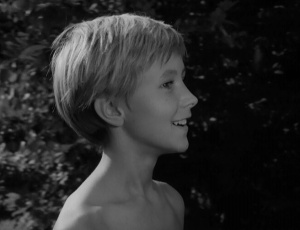
Like in Stalker, there is a triangle of characters formed around the young Ivan and army officials, Lieutenant Galtsev (E. Zharikov) and Captain Kholin (Valentin Zubkov). One of the most poignant moments of nature as ‘comfort zone’ occurs during the scene where the two men accompany Ivan to the drop off point for his next reconnaissance mission. This, in fact, will be the last time that the two men will see Ivan alive. The sense of sorrow toward Ivan and his ‘lost childhood’ is most strongly felt by these two characters, who are old enough to understand the profound sacrifice that Ivan has made for Russia and exactly what he has lost, his parents and any sense of a normal childhood. In a way Ivan represents the collective sacrifices that all Russians endured during the World War II. The theme of sacrifice is of course a common one for Tarkovsky, and is powerfully embodied in this film. The moment in question concerns the scene where the two men see Ivan off to the front. The scene takes place in a moodily shot bog, either at sundown or dusk, so as to camouflage Ivan’s passageway. It opens with a complex long take of 1’52” (76’03”-77’55”) that opens on a high angle shot of murky, shallow waters glistening with reflections of the many tall bare trees surrounding the bog. It tilts up to frame the three men walking slowly, quietly through the bog. The camera tracks with them until they stop at a tree, framing them in a three shot. They say their farewells. Ivan and Captain Kholin share a heartfelt hug, while Ivan and Galtsev share a more formal handshake.
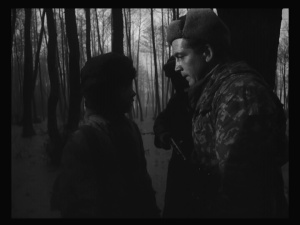
As Ivan leaves them the camera pans left to frame him alone as he begins to walk away into the dark background of the woods. The camera lingers immobile on Ivan as he recedes into the background for twenty-five seconds, and then cuts quite shockingly to a large close-up of Lieutenant Galtsev in a very pensive mood, seemingly in deep thought. It is clear from his expression that he feels great sorrow for Ivan (the formal handshake masking their true emotions). The concern he feels for Ivan is genuine, since, to repeat, it is the last time either of them will see him alive, and it is Galtsev who later discovers Ivan’s death record. What follows this shot (77’55”-78’39”) is a languid tracking shot that moves slowly at a slight diagonal angle across the shallow waters, trees reflecting off its surface and rippling from droplets of rain. A shock sound edit to a bright flash of light from an off-screen flare or bomb interrupts the long take for a second or two before cutting back to the languid tracking shot. The melancholic main musical theme, “Ivan’s Motif” adds to the shot’s sense of a reverie, or waking dream. At 78’39” the shot cuts back to the close-up of Galtsev, his eyes still open but in deep reflection. A few seconds later he blinks, as if snapping out of his day-dream, the camera dollies back slightly and he pulls a cigarette out from his pack with his mouth. Still distracted by his waking dream state he takes a few seconds to notice that the cigarette is in his mouth at the wrong end. The (essentially) long take of 44” takes us away from any narrative trajectory, but demonstrates the value that Tarkovsky places on images of nature, in this case as a ‘mind screen’ (to use Bruce Kawin’s term) of Galtsev’s attempt to remove himself emotionally from the pain of seeing off young Ivan.
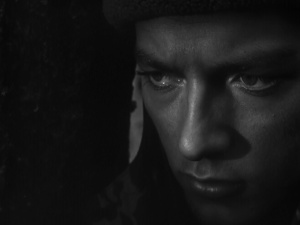
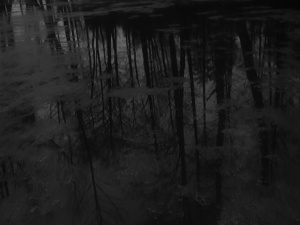
As a side note, it has often been stated that Tarkovsky took over the reign of this film from a veteran director, Eduard Abalov, and one of the things he did was to rewrite the script to include four dream sequences, citing Ivan’s four fairly clearly demarcated dreams. In fact, if you consider, as I do, this to be a ‘dream’ then there are five.
Each of Ivan’s four (or five if you count Galstev’s) dream sequences are in effect, instances of nature as ‘comfort zone.’ The dreams have that function for Ivan: they give him an illusionary respite from his war-time adult responsibilities by allowing him to delve back to (or into) an idealized childhood, one which may or may not have existed as depicted. In the aforementioned first dream which opens the film we see trees, grass, the sky, water, and earth. In the second dream (16’30”–18’40”) nature is restricted to the water in the childhood well. In the third (65’20”– 67’30”) we see nature’s elements in a most idealized and surreal manner (use of negative imagery, rear projection, time bending spatial camera movements) as he remembers a time shared with a pretty, dark-haired, dark-eyed girl on a pickup truck carting a load full of apples. It is raining. The truck stops on a beach, spilling apples onto the shore. Horses begin to eat the grounded apples. The rain has given way to sunshine.
In the final dream sequence Tarkovsky presents the first of what would become a common formal strategy: the (possibly) posthumous dream scene (which can be read into the endings of Mirror, Solaris and Nostalghia, and even the ending of Steamroller and the Violin can be read as the young boy’s dream). The finale is preceded by the post-end of war scene where Lieutenant Galstev rummages through the archival papers of a Nazi extermination camp, and comes across the death record of Ivan: death by hanging. An image of Ivan’s rolling head (most likely imagined by Galstev) cuts to a close-up of Ivan’s mother looking down, wiping sweat from her forehead.
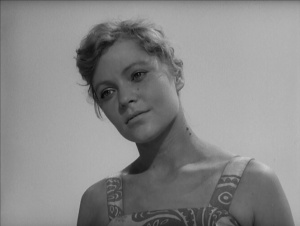
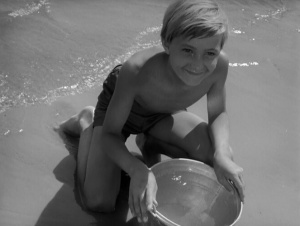
The location, the well on the beach, seems like a continuation of the opening dream. Ivan’s face looking up at his mother appears glowing with happiness, his hair brightly blond as he appears much healthier and happier than ever in the present reality scenes. Only now the mother does not die, or at least not in the same way, as we last see her holding a water pail and waving goodbye to Ivan as she walks out toward the ocean with a slightly melancholic expression on her face, and the lighting decidedly overcast compared to the sunshine visible in the previous shot of Ivan (the shot of her mother walking away, seemingly toward the ocean, is a more poetic, less violent symbol of her death perhaps).
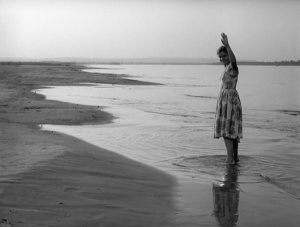
The shot dissolves to a long shot of Ivan playing a game of hide and seek with a group of children. A hint of surrealism enters the dream with the presence of a bare, stark black tree in the middle of the beach. Ivan is last seen running along the beach ahead of the girl from the apple lorry scene, the camera tracking them just as quickly, in an idealized image of childhood innocence. The film ends as it begins, with a fast, unsteady tilt down the black bark of the tree. Ivan is dead, but Tarkovsky prefers to leave us in this ‘comfort zone’ of splendorous nature (either imagined by Galstev, Ivan, or Tarkovsky himself).
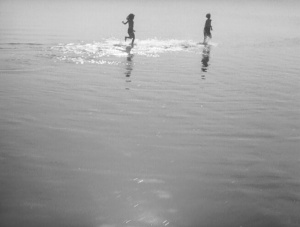
The Calming Presence of the Single Tree
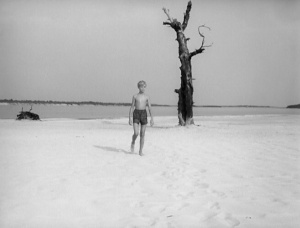
Ivan’s Childhood
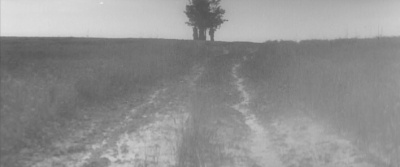
Andrei Rublev
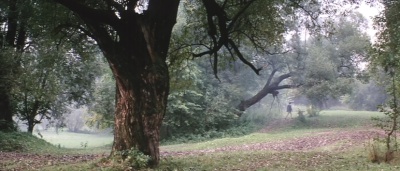
Solaris
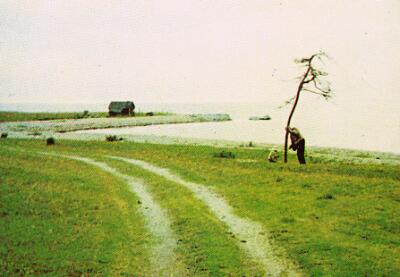
The Sacrifice
Tarkovsky’s next film, Andrei Rublev, is perhaps the richest of his films where the use of nature as a ‘comfort zone’ is concerned. Pain and sorrow are heavily felt throughout the film, given ample space for nature to weave its curative powers. The film is a biopic based on the life of the great 15th century Russian icon painter Andrei Rublev. The story follows Rublev as he leaves his cloistered, protected monastery life after he is commissioned by the reigning Grand Duke of Russia, along with a few other painters, to travel to Moscow to paint a new church. His belief in God and goodness of humanity is severely tested by what he sees happening around him: on top of the violent horrors, the Tartar invasion of a village, the ugly jealousy between the reigning Grand Duke and his envious brother over political power (the two brothers are played by the same actor, Yuri Nazarov, a ploy Tarkovsky used again in Mirror, with Margarita Terekhova playing the narrator’s wife and mother) and the jealousy between artists competing for patronage.
The first instance of nature as ‘comfort zone’ occurs in the opening Prologue hot-air balloon scene. The person manning the hot-air balloon, the peasant Efim, begins to rise into the air, nearing dizzying heights. As he floats above the rural landscape his euphoria gives way to apprehension and fear as the balloon begins an unexpected earthbound descent. At the point of crashing to the ground (captured with a freeze frame), there is a wonderful edit to a slow motion shot of a horse lying on the ground next to a riverbed, trees and high grass. The edit invokes a stark contrast in tone from the kinetic and violent sounds and movements of the descending balloon, to a 180 degree rhythmic and tonal shift to contemplative serenity depicted in the natural setting and slow motion image of the horse rocking itself back to a standing position (the full motion of the horse rising to its feet is seen in the longer, 205 minute version, whereas in the shorter 183 minute the shot cuts before the horse rises fully).
Vlada Petric makes a fascinating observation which fits into my ‘comfort zone’ reading on his selective commentary track on the Criterion DVD of Andrei Rublev. The point comes during Andrei’s recounting of Christ’s Crucifixion (The Passion of Andrei), where we have an extreme long shot of Christ carrying the cross along a mountain side. Petric notes that the large eye-shaped earth stains running down along the side of the mountain are like tears, as if the pain of Christ’s ordeal was being transposed onto the mountain, nature. I would like to expand on Petric’s observation by noting how, from this point on, similar earth stains, which have been associated with tears/pain/sorrow, appear repeatedly during the film, at moments in the narrative where some form of emotional pain is being represented. They appear in the introductory scene of Boriska, the young bell-maker. The scene opens on a close-up of the young boy’s tired, troubled-looking face and then cuts to a close-up of a thick smudge of paint-like earth against the white snow, similar to the stains on the mountainside, with the camera panning slowly along its length. It then cuts back to a wider shot of Boriska talking with an off-screen man who has come looking for his father.
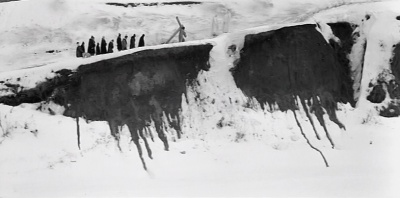
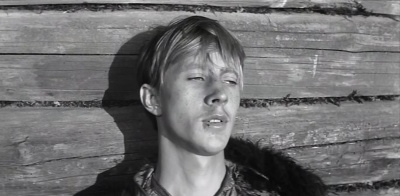
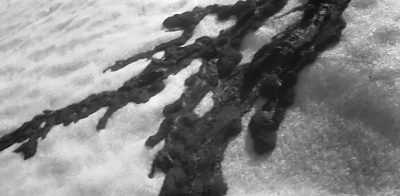
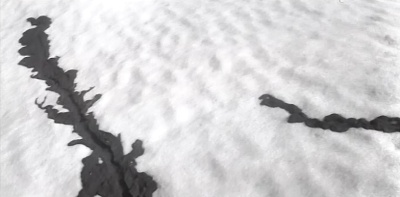
The mud stain returns (only in the full-length 205 minute version) again in Boriska’s dream sequence, when he rests his exhausted and stressed body against the freshly cast bell and falls asleep. The dream begins with a shot craning down a tree, which dissolves into the stain against the snow. Only after the bell is completed and tested to work do we realize that Boriska had lied about a bell casting “secret” that he claimed his father took to his grave. The brief nature respite acts as a form of comfort to the suppressed stress and fear that Boriska kept bottled up within himself until his cathartic outpouring of youthful tears of relief.
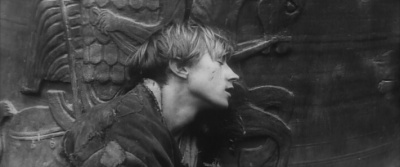
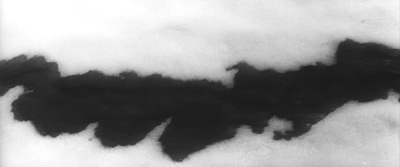
The earth stain also appears earlier in one of the most heart-wrenching scenes in the film: the scene where the travelling painters, masons and apprentices on their way to paint the new church for the Grand Duke of Russia are ambushed, maimed, and blinded on the orders of the Duke’s jealous brother. The first image that removes us from this blood bath is a close-up of a corpse’s upturned hand resting in a stream of water. The camera pans slowly screen left to follow a white milky substance (in the shape of the earth stain) spilling from an opened pouch into the water.
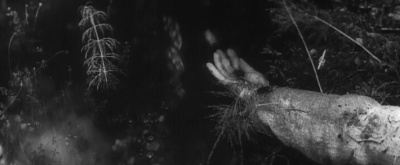
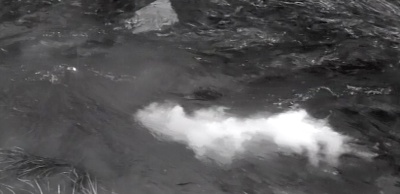
The use of nature as ‘comfort zone’ continues in the edit that takes us away from the scene of the slaughter to the church where Andrei has learned of the attack. The shot begins on a white wall (the said church’s), onto which a swathe of dirt is aggressively thrown against. The camera dollies back to reveal Andrei as the ‘action painter’. He angrily smears the dirt with his hand. The ‘abstract’ smear of dirt splashed against the white wall, which references the mountain ‘tears’ of the Crucifixion scene, is an obvious stand-in for Andrei’s deep pain and sorrow over the slaughter of his co-workers and friends.
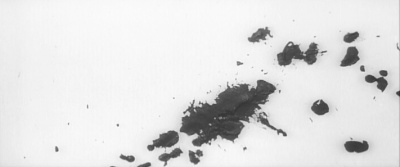
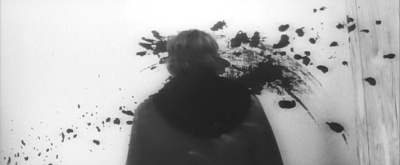
The nature as ‘comfort zone’ continues when the camera tracks left to capture Andrei resting his sad head against a vertical wood log standing in the church. The camera rests on his hand for a few seconds and then tilts down to follow his dirt-stained hand as it caresses the bark of the log, as if Andrei is searching for comfort and ‘grounding’ by touching nature.
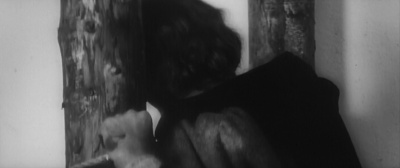
The association of the dirt on the wall with Andrei’s pain is underscored when the mute peasant woman enters the church and begins to instinctually whimper and cry after seeing, feeling, and smelling the dirt on the wall (another instance of one of Tarkovsky’s ‘holy fools’).
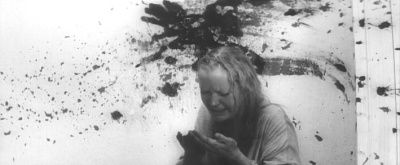
This ‘smear’ makes its final telling appearance, symbolically enough given its connection to Rublev, in the final color montage of the real Andrei Rublev’s painting, The Holy Trinity.*
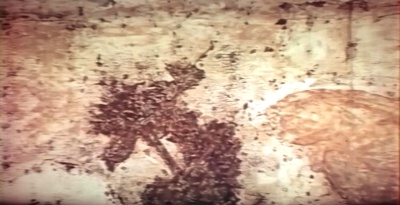
After a series of cuts that connect the woman to Andrei, the scene cuts to what is ostensibly a flashback to an earlier moment where Andrei and Kirill take refuge from a heavy downpour under a single tree. The scene begins with the camera aerially positioned to frame three figures in monk’s clothing running along a dirt road. The camera cranes down the length of a tall tree and then cuts to an empty frame of a tree in the distance seen through the heavy rainfall; and then to two close-ups, one of Kirill gently holding and caressing a pigeon, and the second of Andrei looking serenely off-screen right. The camera then pans away from Andrei and rests for several seconds on a branch being blown by the strong rain wind, before cutting back to Andrei in the church, his back to the camera. The gentle music during this natural respite underscores the sense of genuine tranquility. In fact, at no other time in the film do Kirill or Andrei look as at peace with themselves (which leaves open the possibility that this is Andrei’s dream rather than a narrative flashback, especially when Kirill’s caressing of the pigeon is seen in light of the scene where Kirill brutally attacks a dog to vent his frustration at being overlooked by the Grand Duke in favor of Andrei). The calming force of this scene is made even more striking coming as it does (at least in the long version) right after the pain of the horrendous human slaughter of the painters and masons.
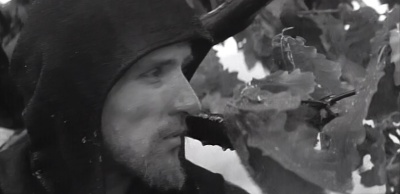
To return to the Crucifixion scene, the pain of Christ’s death is counterbalanced by a return out of this fantasy projection to nature, with the camera cutting to a close-up of Rublev’s young apprentice Fomar cleaning his paint brushes. The camera pans and tilts to follow Fomar as he washes the brushes under the fresh streaming water, but then the camera pans away to contemplate the calming image of the water reeds gently swaying under water.
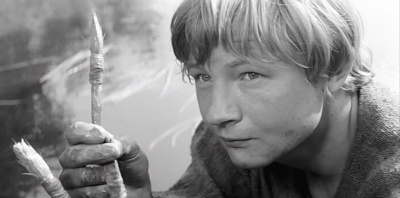
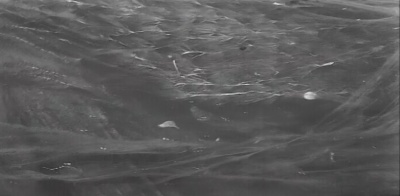
Fomar is later related to a similar stream in his death scene. Felled in the back by a long distance arrow, Fomar is filmed in ultra slow motion walking toward the camera and then falling face first into the water. As it did earlier when it panned away from Fomar cleaning his brushes, the camera pans right away from Fomar to frame an enigmatic and beautiful milk-like substance floating upstream (the white substance recalls a similar liquid that poured out of a carrying pouch after the slaughter). Once again, the pain of a tragic, needless death of a likable character is soothed by a tranquil image of nature.
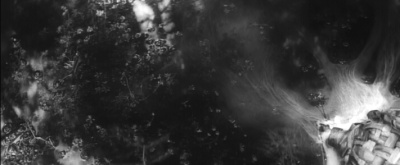
I would like to conclude this analysis of Tarkovsky’s unique use of nature as a ‘comfort zone’ by saying a few things about his two science-fiction films, Solaris and Stalker. Solaris is based on the great same-titled science-fiction novel by Stanislaw Lem. The many philosophical and ethical differences between the novel and film can be summarized by the fact that, whereas the novel begins in space on the Solaris space station orbiting the planet Solaris, the film begins with a 45 minute prologue on earth, which establishes the importance of home, family, and ‘mother’ earth to the psychologist Kris Kelvin (and by extension all humans), who is soon to leave for outer space. The theme of the human body as landscape and the biological link between humanity and nature is established right from the opening, a (second) slow motion close-up shot of plant life swaying under a crystal clear stream that slowly pans right to reveal the hand of a man wearing brown trousers and a dark leather coat standing amidst waist high reeds.
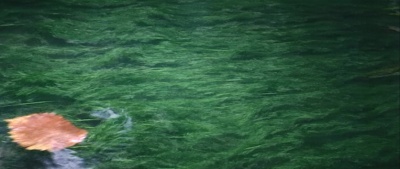
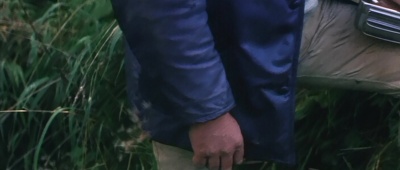
The camera continues to tilt up and stops on a close-up of Kelvin’s face. Tarkovsky spends well over four minutes of narrative time simply showing Kelvin walking around the splendorous natural beauty surrounding the dacha, walking through grass, around trees, stopping to wash his hands in the lake water. The narrative will eventually spend more screen time with Kelvin physically in outer space, but these natural grounds around his family home will be revisited in the many dreams, memories and reveries (and home movie footage) that he has while in the space station, caused by a sense of nostalgia, loss, and the emotional weight of having to ‘relive’ the trauma of his wife’s suicide brought on by the sentient planet’s ability to materialize memories and thoughts experienced by the astronauts and scientists on the Solaris space station. Nature, even if filtered through dream or subjective fantasy, clearly helps Kelvin deal with the range of painful emotions he experiences while in the space station. However, there is a ‘return’ of sorts to earth at the end of the film, when we see Kelvin seemingly walking back to be reunited with his father at the dacha. However, this materializes into an illusion, after the camera cranes away to successfully higher aerial views to reveal that the ‘house’ and everything else around it is a projection onto one of the many islands on Solaris’ surface.
In Stalker, the whole middle section of the film that takes place in the ‘Zone’ is in effect a ‘comfort zone’ for the titular character, who is most comfortable when he is bringing soul-searchers into the government forbidden area of land that was once visited by aliens. Ironically, nature in any state of beauty is only found in the Zone, as the surrounding city from where the Stalker, the Scientist and the Writer depart and return to at the end is a post-apocalyptic wasteland. The Zone is a place where the usually tortured soul of the Stalker can find solace and comfort. The first thing the Stalker says when they arrive into the Zone is, “Well, we’re home. How still it is. This is one of the quietest places on earth. It’s so beautiful. There’s no one here.” His symbiotic relationship with the Zone is visually suggested a few minutes later, when he wanders off on his own to lay down amid the waist high vegetation. The shot is very reminiscent of the shot of Kelvin from the opening of Solaris, and as another point of connection, Stalker is wearing a similar dark leather coat as Kelvin. Stalker has a similar overall A-B-A structure as Solaris, but in reverse. Whereas Solaris begins in nature, goes to space, then returns to nature (only as an illusion), Stalker begins in the city (post-apocalyptic wasteland), goes to the Zone (nature, only with an ‘alien’ aura), and returns to the city (post-apocalyptic wasteland). Only in Stalker some of the ‘hope’ and ‘faith’ that the Stalker finds embodied in the Zone finds its way back to the city in several subtle ways (the dog that comes with them from the Zone, the isolated appearances of color associated with the Stalker’s mutant daughter Monkey, and the same daughter’s possible telekinetic powers).
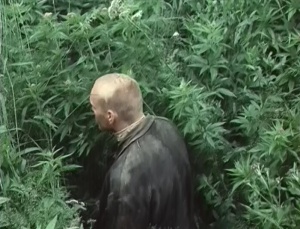
Stalker
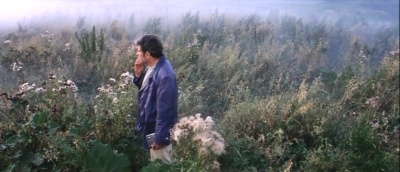
Solaris
These many instances of Tarkovsky using nature as a form of respite, a ‘comfort zone’ for characters experiencing emotional pain can be traced across the other Tarkovsky films not discussed in this essay, Steamroller and the Violin, Mirror, Nostalghia, and The Sacrifice. Many Tarkovsky scholars and writers have noted the prevalence of nature in his films, but few have delved further into what this reliance on nature might mean, or what some of the aesthetic, formal or philosophical reasons for Tarkovsky’s artistic love of nature may be. I believe that there are many potentially fascinating avenues for this discourse (not only with Tarkovsky but with other directors). In my earlier research I noted how nature is an important touchstone for Tarkovsky’s theoretical concept of time-pressure or time-thrust. In this analysis I have opened up the terrain by revealing how the notion of nature as a ‘comfort zone’ can shape character, structure, form and theme.
*PS: This observation about the smear appearing in the painting at the end was added to the essay after its initial publication, on February 21, 2011.
Bibliography
Totaro, Donato. “Time and the Film Aesthetics of Andrei Tarkovsky,” Canadian Journal of Film Studies/Revue canadienne d’études cinématographiques Volume 2 No. 1 (Spring, 1992): 21-30.



